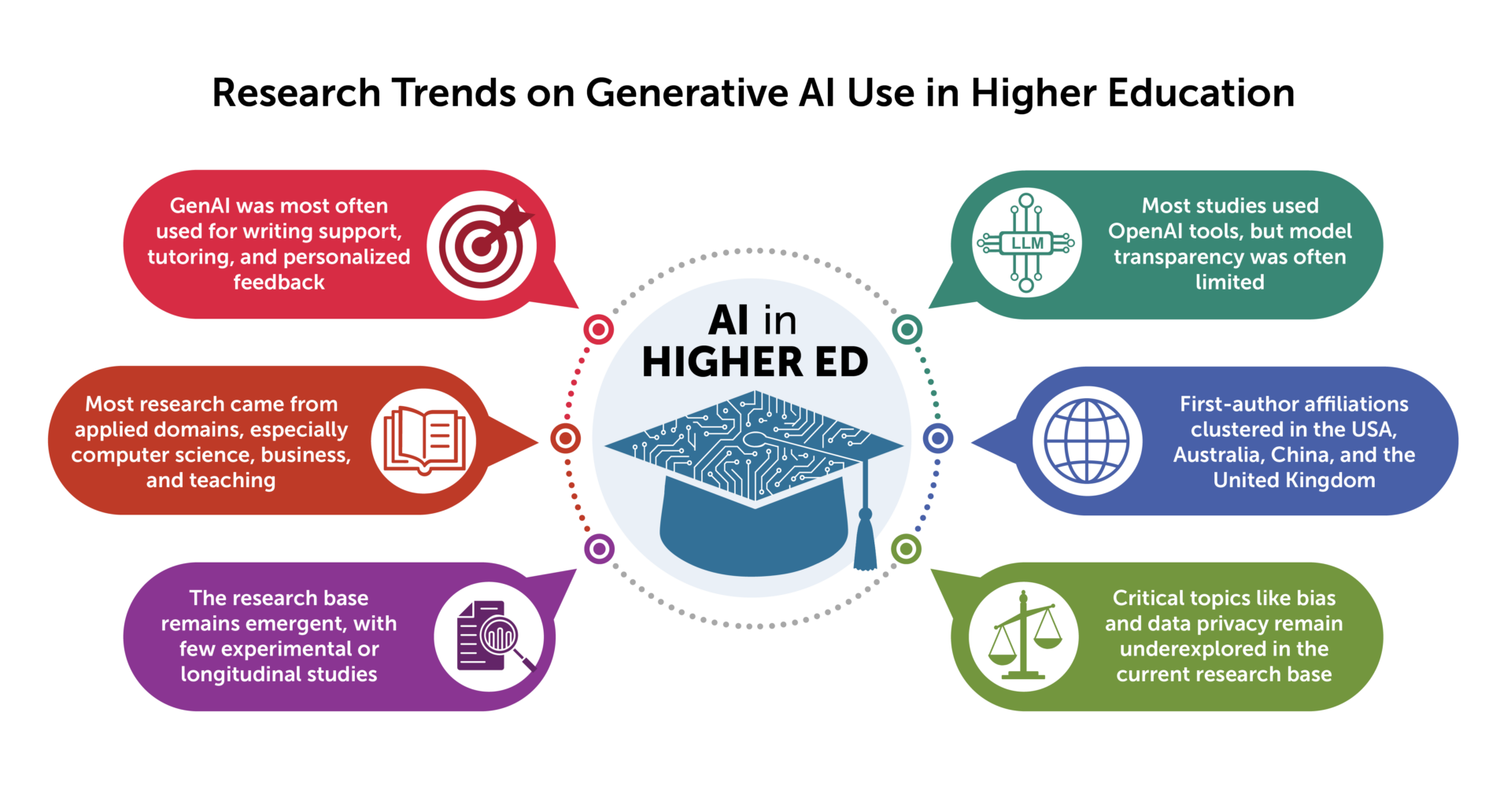
To better understand how the field is responding, we created AI in Higher Education, a collection of more than 300 studies that examine the uses, impacts, and designs of generative AI in higher educational settings. Published between 2022–2025, these papers include empirical research, descriptive analyses, and position pieces that explore how generative AI is being interpreted, adopted, and assessed across higher education contexts.
Across the dataset, the studies reflect a broad geographic distribution, with notable concentrations in the United States, Australia, the United Kingdom, and China. This spread highlights generative AI’s global uptake and research interest in higher education.
Drawing from more than 300 studies, the image below captures emerging trends in how generative AI is being studied in higher education. It showcases common applications—especially in writing and assessment—alongside disciplinary patterns, global authorship, and methodological approaches. It also points to gaps, including data privacy concerns and limited reporting on how the generative AI models were designed and configured.

Many studies examine AI in relation to writing and assessment. However, as the research evolves, new studies are uncovering diverse and inventive ways that generative AI is being used to support teaching, learning, and faculty development. For example:
For much of this research, undergraduate settings dominate, but new work is emerging in graduate, continuing, and professional education, including teacher training and nursing education.
ChatGPT was the most frequently referenced model in recent studies on generative AI in higher education. This was despite the continued diversification of the ecosystem with tools such as Google Bard, Gemini, Claude, and institution-specific tutors. While widespread use of ChatGPT reflects its ease of access and broad functionality, many studies lack detail about the specific version of the model used, or how it was configured. This absence of specificity may affect reproducibility of these studies and makes it difficult to compare findings across studies. Research on the use of generative pre-trained transformers (GPTs) in higher education remains in its early stages, with many projects still exploratory in nature and unevenly distributed across academic disciplines.
Taken together, this collection of studies provides a panoramic view of how AI is beginning to shape educational practice—not just through technical tools, but also by raising new research questions, instructional strategies, and design opportunities.
As AI becomes a more routine part of higher education, its long-term impact will hinge on how institutions balance technological advancement with research, inclusion, and clearly defined educational goals. The studies reviewed indicate that while the technology is advancing quickly, the practices and policies surrounding it are still taking shape. Continued experimentation is valuable, but it must be paired with rigorous evaluation and clear reporting in order to support learning across institutions.
Faculty, researchers, students, and administrators all have a role to play in shaping how AI is used, ensuring its implementation is inclusive, transparent, and responsive to local needs. In this sense, the field is not just adopting a new toolset—it is collectively designing the conditions necessary for AI to meaningfully support teaching and learning in higher education.
As campuses experiment with AI tools, the following resources can help stakeholders assess readiness, align efforts with institutional goals, and anticipate emerging needs.